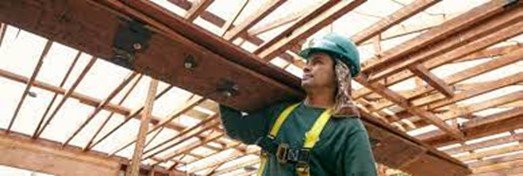Resiliency and Natural Disaster Debris Workshops
On this page:
Workshop Summary Report
EPA and its partners convened a series of virtual workshops on Resiliency and Natural Disaster Debris with EPA Region 5 and EPA Region 9 in 2021.

The Resiliency and Natural Disaster Debris Workshop Final Summary Report (pdf) provides a summary of themes and potential actions that emerged from the virtual Workshop conversations held in the spring and summer of 2021. The purpose of the report is to provide highlights and suggested actions that participants or others could implement to advance resiliency in planning for and managing natural disaster debris.
Background
Natural disasters devastate communities every year. They damage households and businesses, generating significant amounts of a wide variety of natural disaster debris, disrupting local ecosystems, and taxing already limited resources. These Workshops were designed to identify opportunities for action by interested parties across the disaster management and sustainable materials life cycles so that everyone may live in a resilient world where less debris is generated and fewer resources are used to rebuild and recover.
The Workshops were attended by over 110 experts on disaster debris planning and management, disaster response, environmental justice, circular economy, deconstruction, and green building and included representatives from federal, state, local, Tribal, and territorial governments, non-governmental organizations, and academia.
Workshop participants generated a range of practical steps the federal government and others can take to bridge gaps and drive innovation around disaster debris management and resilience, including:
- Reducing the generation of disaster debris.
- Equitably and safely managing disaster debris.
- Leveraging funding resources.
- Building a community of practice.
- Developing a resource center with technical assistance.
- Sharing and developing additional case studies, best practices, and pilot projects.
The purpose of the Workshops was to:
- Establish a common understanding of what it means to apply life-cycle approaches to disaster debris, such as design for adaptability and disassembly, deconstruction, reuse, recycling, and composting.
- Discuss key challenges and opportunities to expand life-cycle thinking to achieve circular economy goals.
- Identify potential solutions and next steps for interested parties to advance this work across the public and private sectors.
Key insights and potential actions expressed by participants were assembled into a summary report. Some key environmental justice and climate findings included:
- Community involvement in planning is critical because disaster debris management and the associated truck traffic has been a long-standing obstacle to advancing environmental justice after disasters, as many low-income and minority communities live near debris disposal sites.
- Due to climate change, more frequent and more intense natural disasters and sea level rise are expected to result in larger quantities of debris. Planning now can help mitigate the human health and economic hardships.
- Sea level rise is and will continue to necessitate moving buildings that have not yet been damaged. Planning to move and deconstruct buildings before they are damaged, and recovering these valuable building materials will conserve resources, provide low-cost rebuilding materials, and create jobs.
For additional information, use this webform to contact us.
